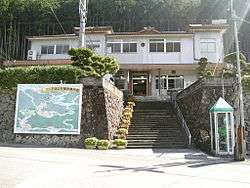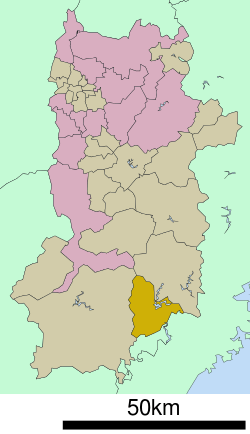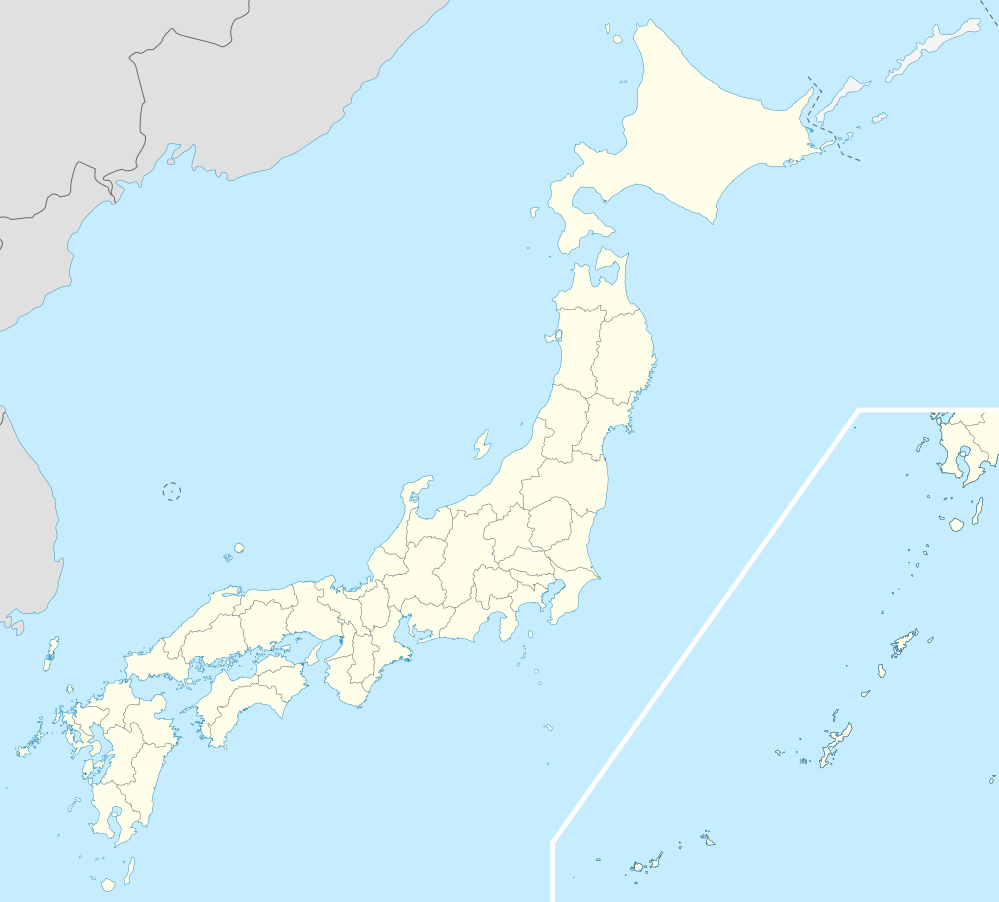Shimokitayama, Nara
Shimokitayama (下北山村, Shimokitayama-mura) is a village located in Yoshino District, Nara Prefecture, Japan.
Shimokitayama 下北山村 | |
|---|---|
Village | |
 Shimokitayama Village Office | |
 Flag  Emblem | |
 Location of Shimokitayama in Nara Prefecture | |
 Shimokitayama Location in Japan | |
| Coordinates: 34°0′N 135°57′E | |
| Country | Japan |
| Region | Kansai |
| Prefecture | Nara Prefecture |
| District | Yoshino |
| Area | |
| • Total | 133.53 km2 (51.56 sq mi) |
| Population (October 1, 2016) | |
| • Total | 855 |
| • Density | 6.4/km2 (17/sq mi) |
| Time zone | UTC+9 (JST) |
| Website | www |
As of October 2016, the village has an estimated population of 855 and a density of 6.4 persons per km². The total area is 133.53 km².
Bordering on Kamikitayama to the north and Totsukawa to the west, it is the southeasternmost region in Nara Prefecture. It shares a border to the east with Kumano, Mie Prefecture, and to the south, with Kitayama, Wakayama Prefecture.
Geography
Shimokitayama is composed of seven main hamlets, arranged roughly in a circle, and Zenki, which is no longer inhabited but which once housed a religious community of shugendo practitioners, including Jitsukaga.
Roads lead north toward Nara from Ikehara, east toward Kumano from Shimokuwahara, south toward Kitayama from Kamikuwahara, and west toward Totsukawa from Uramukai.
- Ikehara
- The main center of Shimokitayama's main industry, tourism, Ikehara is home to Kinari no Sato, a resort containing an onsen known as Kinari no Yu, various fishing and camping shops, gas stations, a few cafes and izakaya, and a small karaoke bar. It also contains Fumonji, a temple of the Sōtō sect of Zen Buddhism, and Shimokitayama Junior High School.
- Ikemine
- Ikemine is home to the Ike no Taira nine-hole golf course, the Myōjin Ike Pond Shrine and a Tenrikyō temple.
- Teragaito
- Teragaito contains Shimokitayama's village hall, Sumiyoshi Shrine, and Shimokitayama Elementary School. It is also home to Shōbōji, a temple of the Sōtō sect of Zen Buddhism at which local shugenja Jitsukaga Gyōja is enshrined.
- Uramukai
- Uramukai includes the drainage area known as Okuji, a series of waterfalls and mountain streams sacred to shugenja, who keep a hut high in the mountains for training purposes.
- Sada
- Sada is home to a gas station and a Tenrikyō temple.
- Kamikuwahara
- Kamikuwahara is almost entirely residential.
- Shimokuwahara
- Shimokuwahara contains Shimokitayama Preschool and Ryūganji a temple of the Sōtō sect of Zen Buddhism.
- Zenki
- Zenki is a wild and mountainous region which contains several large waterfalls sacred to shugenja, including the famous Nana E no Taki.
External links

- Shimokitayama official website (in Japanese)
- 【Beautiful Japan】NARA Zenki Shimokitayama(English sub)